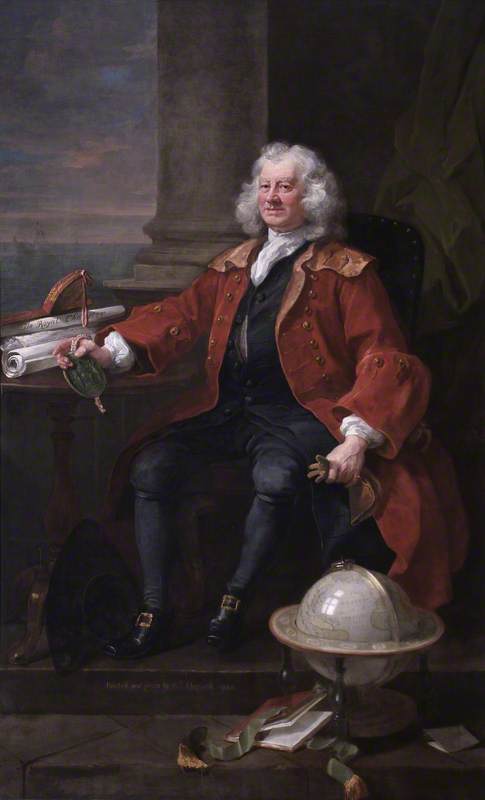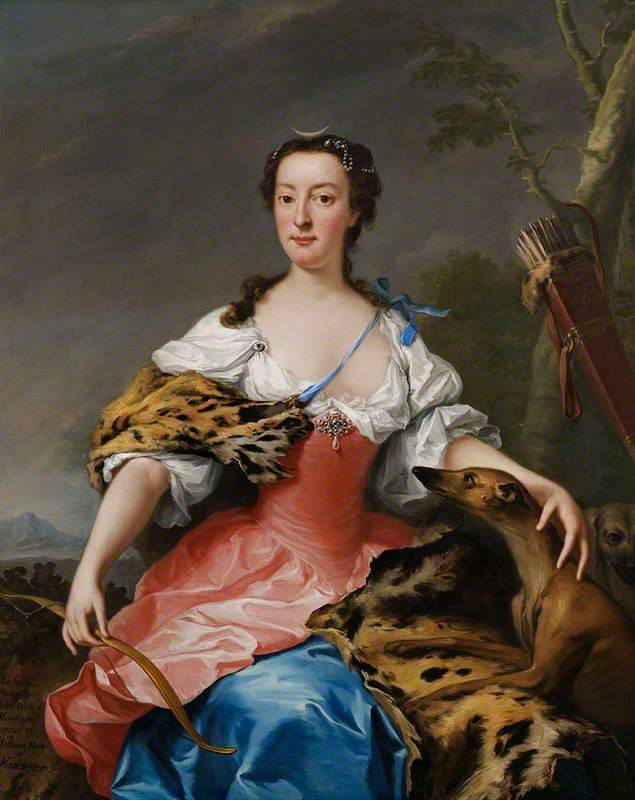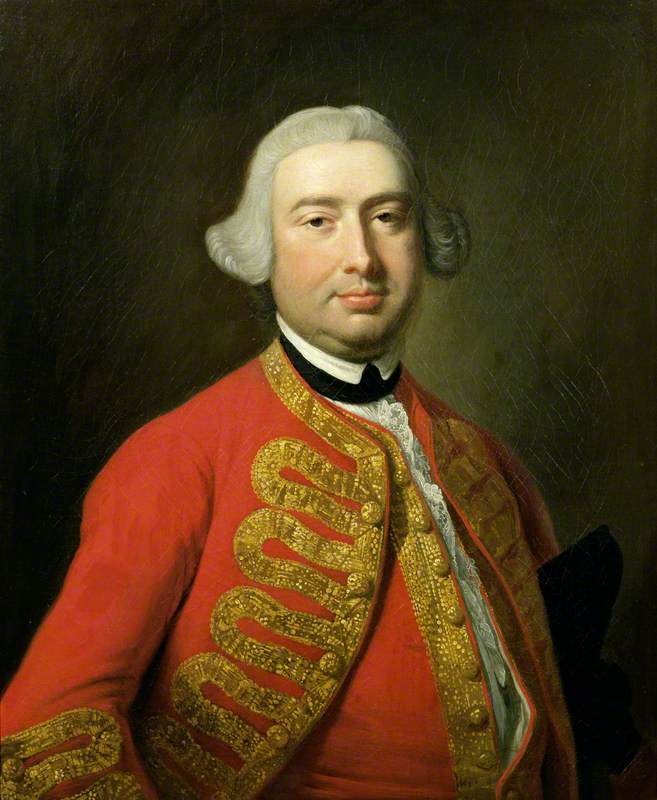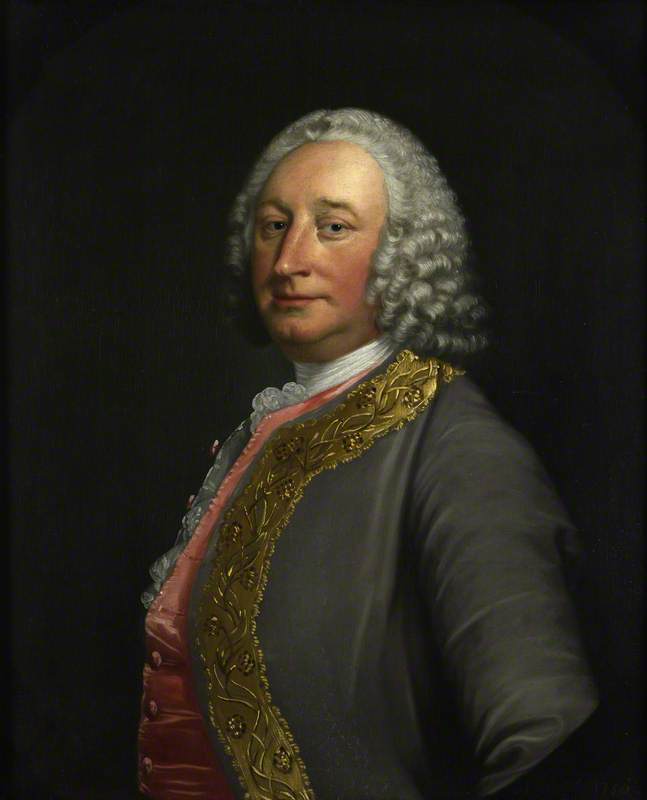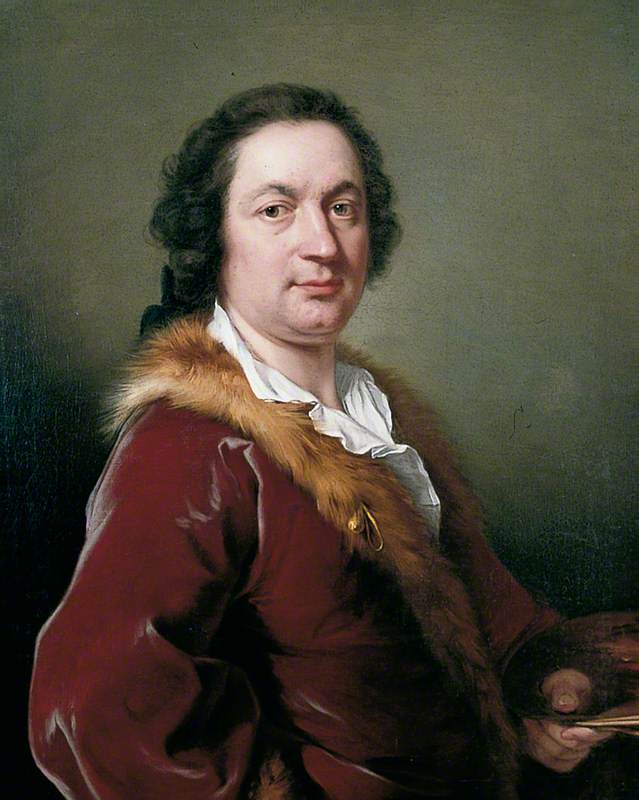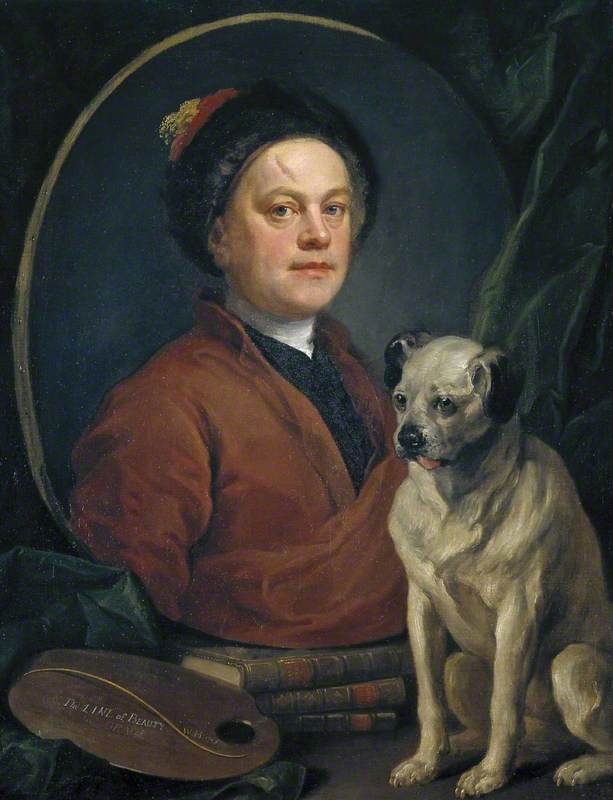The Foundling Museum tell the story of the Foundling Hospital, which continues today as the children's charity Coram. It is a story about the children who lived at the Hospital, how they came to be there, how they were looked after, and how the Hospital was established and run. It is also a story of how, from the very beginning, the Hospital was supported by London’s vibrant artistic community.
Art Unlocked is an online talk series by Art UK in collaboration with Bloomberg Philanthropies. This Curation is based on a talk by Caro Howell, Director of The Foundling Museum, on 11th August 2021. You can find a recording at https://youtu.be/c7ewTpBieJA
-
Captain Thomas Coram (1668–1751) 1740
This portrait of Captain Thomas Coram was painted and presented to the Foundling Hospital by Hogarth in 1740. Hogarth donated his portrait of the Hospital’s founder to commemorate the granting of the Royal Charter by George II in 1739 which Coram is depicted holding. Hogarth also makes several references to Coram’s maritime career such as the sea backdrop and the globe in the foreground showing the ‘Western or Atlantick Ocean’. Hogarth intended this portrait to inspire British artists to produce what he called ‘mighty portraits’ to rival their continental counterparts. His realistic portrait also broke with convention in that it depicted Coram, a self-made man, in the medium traditionally reserved for royalty and the aristocracy.
William Hogarth (1697–1764)
Oil on canvas
H 238.7 x W 147.3 cm
Foundling Museum
-
Isabella Duchess of Manchester (1706–1786) 1738
Isabella, Duchess of Manchester, was one of Thomas Coram’s key female supporters who provided the catalyst for the establishment of the Foundling Hospital. In the face of male indifference and risking society’s disapproval, these women put their names to the first petition submitted to George II in 1735, that called for the establishment of a home for ‘abandoned and deserted young children’. The support of these pioneering women was crucial in overcoming moral concerns about Coram’s project, enabling his campaign to gain the critical momentum that led to the establishment of the UK’s first children’s charity.
Andrea Soldi (c.1703–1771)
Oil on canvas
H 127 x W 101 cm
Foundling Museum
-
Trumpet Boy 2010
Yinka Shonibare CBE, RA is a British-Nigerian artist whose work explores issues of cultural identity, race and colonialism, often by re-imagining well known Western art works, particularly British art of the eighteenth and nineteenth centuries. He is best known for sculptures which use ‘African’ fabrics; Dutch printed cotton whose origins lie in Europe’s trade routes with Indonesia and Africa.
Trumpet Boy was shown as part of The Foundling Museum’s 2016 exhibition FOUND, curated by Cornelia Parker. The figure of the boy is dressed in a Victorian suit made from bright African textiles, he holds a cornet to his mouth, and his head is a celestial globe with the stars renamed after famous black musicians.
Yinka Shonibare (b.1962)
Fibreglass, Dutch wax print cotton, leather & steel
Foundling Museum
-
John Beard 1743 (?)
John Beard was a tenor singer who created many roles in Handel's operas and oratorios, and sang at Handel's benefit concerts for the Foundling Hospital. Beard is depicted half-length turned slightly to his left, head facing forwards, in a red coat trimmed with gold, white shirt and cravat and wig, holding a hat under his left arm.
Thomas Hudson (1701–1779)
Oil on canvas
H 75 x W 63 cm
Foundling Museum
-
Dame Jacqueline Wilson (b.1945), DBE, FRSL 2018
Jacqueline Wilson is an award-winning children’s author and former Children’s Laureate. In 2008, Wilson became one of the Foundling Museum’s first Foundling Fellows. For her Fellowship, Wilson wrote her first historical novel, 'Hetty Feather', about a nineteenth-century foundling girl growing up in the Foundling Hospital.
The portrait was commissioned as part of the Museum's year-long commemoration in 2018 of 100 years of female suffrage.
Saied Dai (b.1958)
Oil on gesso panel
H 125 x W 95 cm
Foundling Museum
-
Children with Birds & Dogs #3 2019
Children with birds & dogs #3 is one of 24 large-scale drawings from two bodies of works - Children and Dogs, and Children, Birds & Dogs, the latter made especially for the Museum - donated to The Foundling Museum in 2019 by Blake.
Featured in their 2021 exhibition (25 June – 26 September 2021), Quentin Blake: Gifted, the show conveyed the internal emotional landscape of childhood.
Quentin Blake (b.1932)
Oil pastel on watercolour paper
H 56.5 x W 43.5 cm
Foundling Museum
